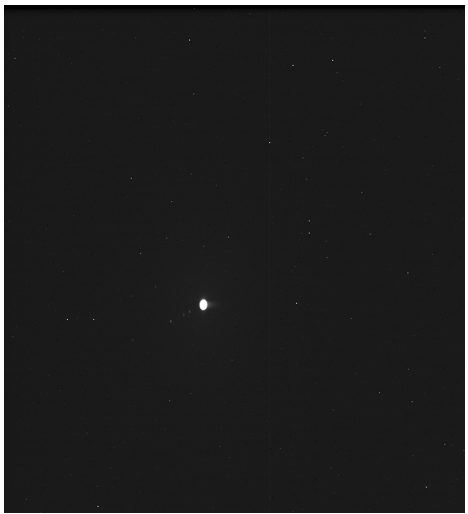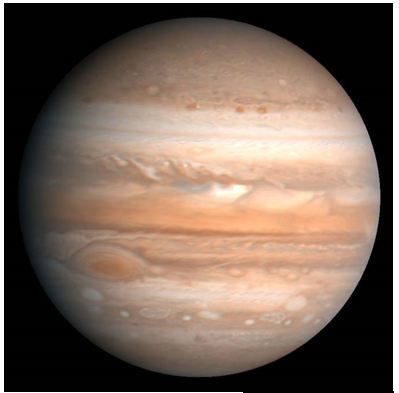Among a variety of the existing planets in the Solar System with their unique characteristics, importance, and relevance to the Earth, Jupiter remains to be one of the most interesting unusual and remarkable objects for consideration. Its history, as well as its name, is closely connected to the Romans. Its place in the system may be easily compared with the role of the Romans in history. During prehistoric times, Jupiter was called a “wandering star,” and nowadays, people name it as the “King of Planets,” particularly because of its size, magnetic field, and the dozens of moons in regards to other planets (Siegel 164). The current paper aims at discussing and evaluating Jupiter from different perspectives, mentioning its size, location, age, appearance, history, etc., and proving that it has to be cared for and studied thoroughly by people.

Jupiter is considered to be more than just an amazing object that can be observed in the sky. It is known due to its size (more than twice bigger than all other planets combined), its long history (its first record was dated in the 7th BC), and its satellites (more than 60 moons are around the planet) (Tiner 43). On the one hand, this planet does not differ from the Moon or some other stars that can be visible from the Earth (Figure 1). On the other hand, its detailed analysis introduces the planet as a massive gas giant with absent surface and a faintly identified set of dust rings that amazes people and make them think about this planet as something unstable still important (Figure 2). This is why it is interesting to investigate Jupiter in order to prove that its specific characteristics make its role more crucial. Though its overview is a simple combination of numbers and metric data, its grandiosity cannot but amaze people.

Due to the presence of a number of moons as its satellites and a powerful magnetic field, the experts usually define Jupiter as a unique miniature solar system. There are four main satellites, which may be compared with the one of the Earth’s, the Moon; the others are smaller, still, their amount is influential indeed (“Fast Facts: Jupiter” par. 7). It is also stated that there is no life on Jupiter, but some of its moons with oceans may support life. However, this argument is hard to check for sure because of a few missions with positive results have been organized. In spite of the fact that Jupiter is more distant than Mars to the Earth, it is usually brighter, and it shines during the whole year around. Its shining is characterized as robust and constant (Tiner 42). This is why people can observe it from the Earth in case they know where and what to look at it.
The combination of some general facts about Jupiter can help to create a more or less clear picture of the planet and its development. In fact, the experts face a serious challenge defining its age, still, they admit that Jupiter is as old as the Sun. So, it is possible to assume that Jupiter is about 4.5 billion years. It is located in the Solar System with an average distance from the Sun about 483.600.000 miles and from the Earth about 390.000.000 miles, and its orbital period over the Sun is 11.86 Earth years (“Fast Facts: Jupiter” par. 3).
Though many people know Jupiter as the largest planet in the system, not all of them know that it is about 318 times bigger than Earth. In other words, its surface equals 122 Earth’s surfaces. There are also a number of lightning flashes that may be observed in the Jupiter’s atmosphere, and the experts admit that they are 1000 powerful than those on the Earth. It is also interesting to know what such a huge planet can consist of. There are two primary components of the planet’s atmosphere: hydrogen (86%) and helium (14%) (Tiner 51). The molecules of the gases are in constant motion, and the motion depends on the structure of the gas chosen (the lighter – the faster). However, the molecules of these two gases are not able to gain enough energy in order to become the reasons for a high gravity index.
In the paper, there has been already mentioned that Jupiter is the planet with a number of satellites of different sized. Tiner explains that it is possible to use the satellites in order to weigh the planet, still, this kind of weighing is more subjective because he talks an approximate mass of Jupiter (50). Now, it is known that Jupiter’s mass is about 1.900 x 1027 kg (“Fast Facts: Jupiter” par. 5). Due to its great mass and the ability to cooperate with the satellites with a weaker gravity, Jupiter is characterized by a high gravity index.
In addition to such “dry” facts about such a magnificent planet as Jupiter, it is also possible to add several specific features that can attract people’s attention and introduce Jupiter from a new side. For example, the Great Red Spot on Jupiter is a result of a huge swirling gas storm lasted during several hundreds of years (“Fast Facts: Jupiter” par. 8). Its size is larger than Earth, and its importance is evident for the planet. The Spot was firstly introduced and discovered by Robert Hooke in 1664, still, his discovery was done in a wrong belt; and Giovanni Cassini observed its drifts in 1671. The periods with which the Great Red Spot drifted across the planet helped to identify the speed with which the planet actually rotated (Tiner 47).
The researcher was amazed how fast it could move, because 10 hours for such a huge and massive planet was really an amazing fact. Such huge speed also serves as an explanation of the planet’s form because its fast rotation leads to the bulge directed to its equator.
Each event on the planet may be an influential factor for its development as well as for the development of the planets around. For example, in the middle of the 20th century, some astronomers truly believed that Jupiter could serve as a protective means for the Earth due to its atmosphere and gravity factor. Jupiter may have enough opportunities to make the crown of asteroids, comets, and other bodies thinner and less dangerous for the Earth. These suggestions help to realize that the Earth can be under a threat of numerous bodies of the Solar System, and it is wrong to neglect the impact of other planets, even such long-distant like Jupiter. The overview of the Jupiter’s history may become a helpful tool in realizing the importance and the role of the planet under consideration in regards to the whole system and the Earth in particular.
As it has been mentioned, Jupiter is as old as the Sun itself. The Babylonian astronomers recorded Jupiter and its activity in the 7th century BC for the first time (Tiner 45). As many other discoveries of that time, it was associated with religion. The Babylonians associated the planet with their main god, Marduk, the Greeks knew him as Zeus, the god of thunder, the Germans saw the chosen planet as their god Thor, and the Romans named it after its king god, Jupiter. The results of these observations are based on the choice of the Romans. Nowadays, the whole world knows the hugest planet in the Solar System, Jupiter.
The name of Galileo is also connected to Jupiter and its history. This scientist and astronomer is known as a discoverer of the major moons of the planets in the beginning of the 17th century. He turned his telescope to Jupiter and started examining its bright disks. Everyday observations provided Galileo with a solid basis for the discovery that the moons of Jupiter were as huge and massive as the satellites of the Earth.
Taking into consideration the above-mentioned facts and the results of the discoveries, it is possible to say about the importance of Jupiter in regards to the Solar System. First, its gravitational importance should be mentioned. Other planets may be protected due to the ability to decrease the number of cosmic bodies’ threats. Second, the evaluation of the Jupiter’s moons provided the scientists with hope in regards to life on the planet. The point is that the existence of underground oceans may create the necessary conditions for living. Unfortunately, these are only some guesses and suggestions that have to be supported by evidence and missions to the chosen planet and its satellites.
In general, Jupiter is the planet with a rich history. Its characteristics serve as the best proof that people have already learned a lot about this planet, still, there are also many issues that have to be identified, improved, and analyzed. It is not enough to know the fact that Jupiter is considered to be one of the largest planets in the existing Solar System (“Fast Facts: Jupiter” par.1). There are many other interesting facts that can be mentioned. Jupiter is the biggest gas planet that rotates within the shortest period in time compared with other planets of the same system. At the same time, it performs a protective function and helps other planets feel safe in regards to a number of asteroids and comets that move chaotically throughout the Solar System.
Though there is no life on Jupiter, people want to believe that additional investigations, constant missions, and evaluations of the planet’s possibilities make it real to admit one day that it is possible to live on Jupiter and use its riches for good. If the ancient people gave the name to this planet in honor of their main god, they probably did it for some reason. And the people of nowadays should not neglect the choice of their ancestors and try to understand why the name of such a crucial god was given to the planet. In fact, Jupiter has more secrets to be revealed in addition to the facts mentioned in the paper.
Works Cited
“Fast Facts: Jupiter.” Amazing Space n.d. Web.
Siegel, Chris, G. Stars of Light: The Hidden Message of Redemption: Message One, Bloomington, IN: CrossBooks, 2012. Print.
Tiner, John, H. Exploring the World of Astronomy: From Center of the Sun to Edge of the Universe. New Leaf Publishing Group, Green Forest, AR, 2013, Print.